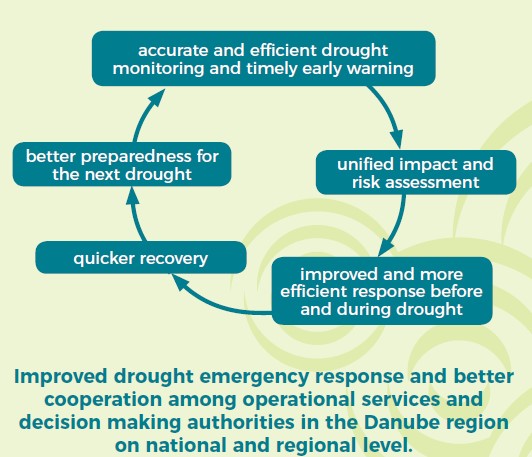DriDanube - First steps towards the Strategy for efficient and operative drought management in the Danube Region
25-04-2018
Review of the current status of drought management in the Danube region countries
Strategy to improve drought emergency response in the Danube region is one of the key outputs of the DriDanube project. Its ambition is to improve policy framework for drought management in the Danube Region which is dispersed and marked with diverse national policies which are not addressing droughts directly.
Photo: Strategy will help to improve response before and during drought, support quicker recovery and increase preparedness for the next drought event.

A clear understanding of the present national and international legislative and institutional setting connected to drought risk management and water management in each participating country is a starting point for the Strategy preparation. Therefore, the partners began with the review of the current status of drought management summarized in the Common report on existing drought management status in the Danube region. The aim of the review was to “scan the ground” to see where we currently stand: what approaches the countries are using to monitor drought, which national legislation (if any) is addressing drought, which national institutions are involved in drought management, what are the procedures before/during/after drought events, what kind of educational or research programmes with focus on drought exist in the countries. Such a review is therefore key for the development of the Strategy through which we can better identify existing good practices as well as fields of improvements.
The review is based on the separate country reports, prepared by the project partners in their respective countries. Inputs were obtained through an online survey which was shared among all DriDanube partners. They filled out the survey in cooperation with the national authorities and other institutions involved in national drought monitoring and/or management. Additional source of information for the review came out of the discussions with the stakeholders during the National Briefing Seminars.
Positive developments in the current drought management in the Danube region:
· Despite not having clear drought management policy in place, there is an increased interest in proactive approach (to be better prepared for the next drought).
· There is a legal framework established on post-drought procedure for economic estimation of drought damage in some countries of the region which is a good background for the drought impact assessment.
· Drought preparedness is slowly becoming a priority in all countries of the region.
· Some key documents such as action plans and management plans in relation to drought are under development or have been adopted by the governments already (for example in Bosnia and Herzegovina, Romania and Slovakia).
Weaknesses of the current drought management on which Strategy will be focusing:
· No unified/clear definition of drought. Terms like “dryness”, “dry periods”, “heat waves”, “water scarcity”, “drought” seem to be used interchangeably, therefore distinction of drought and its meaning from other natural phenomena mentioned above is required.
· No systematic collection of data and information on drought impacts on different sectors (neither in agriculture, even less in other sectors).
· Despite drought monitoring being relatively sufficient in most countries of the region, it is not connected with the decision-making processes.
· In majority of the countries there is no document that addresses drought directly. Drought or drought management is only partially and insufficiently considered in several different strategic documents, laws, regulations, programmes etc. in reference to emergencies or natural disasters.
· Missing clear regulations and institutional responsibilities when it comes to data sharing and taking actions before and during drought development.
· Weak cooperation among relevant sectors.
